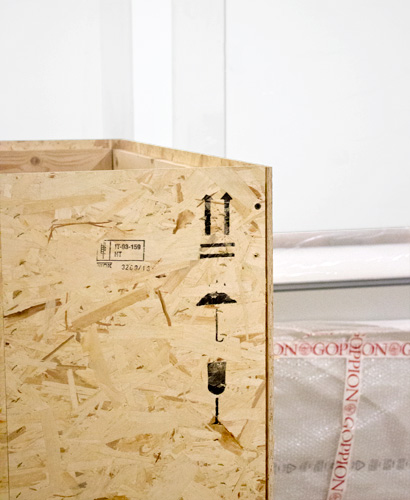To say that the Collections Management team has been working hard to prepare for the opening of the new Harvard Art Museums is a dramatic understatement. To date, more than 40,000 works of art have been packed and made ready for the opening.
Knowing that all the objects in the museums’ collections—about 250,000 works—would eventually be moving, the team performed a collections inventory and coordinated conservation assessments with the Straus Center for Conservation and Technical Studies well before the beginning of the renovation and expansion project. Starting in 2002, every work of art was physically identified, barcoded, photographed, and if needed, rehoused. That six-year project lasted until the closure of the Harvard Art Museums’ 32 Quincy Street location in 2008, when efforts were refocused on preparing for the collections move.
The 2014 move into the newly renovated space poses a greater logistical challenge than the one six years ago. While the 2008 move was all-encompassing and took 18 months, the 2014 move will leave some works of art in storage, return others to their former locations, and move others to new locations in the building.
“It’s almost like we have two simultaneous projects: the gallery installation and art storage installation,” said Jennifer Allen, director of Collections Management. Approximately 2,000 works of art will be installed in 63 areas of the new facility.
“The hours of work that have gone into the process are incalculable,” said Karen Gausch, exhibitions production manager. Gausch has led a team of seven staff members in preparing and installing works of art.
Now, as art is coming into the new spaces, curators are making final adjustments to the visions they have for the galleries. No matter how much planning and years of preparation that have been put into place, there are always things that can’t be anticipated. The experience, Gausch said, has required Collections Management staff to be meticulous, organized, and flexible. “A crystal ball doesn’t hurt, either,” she said.
Ultimately, “every work that you see in a gallery has a history of getting ready to be there, and each has been painstakingly examined and considered so that it’s placed in the best way for visitors to view it,” said Gausch. “No object has been untouched in that regard; all that preparation comes together at the moment when the work is in the gallery, in front of the viewer.”



